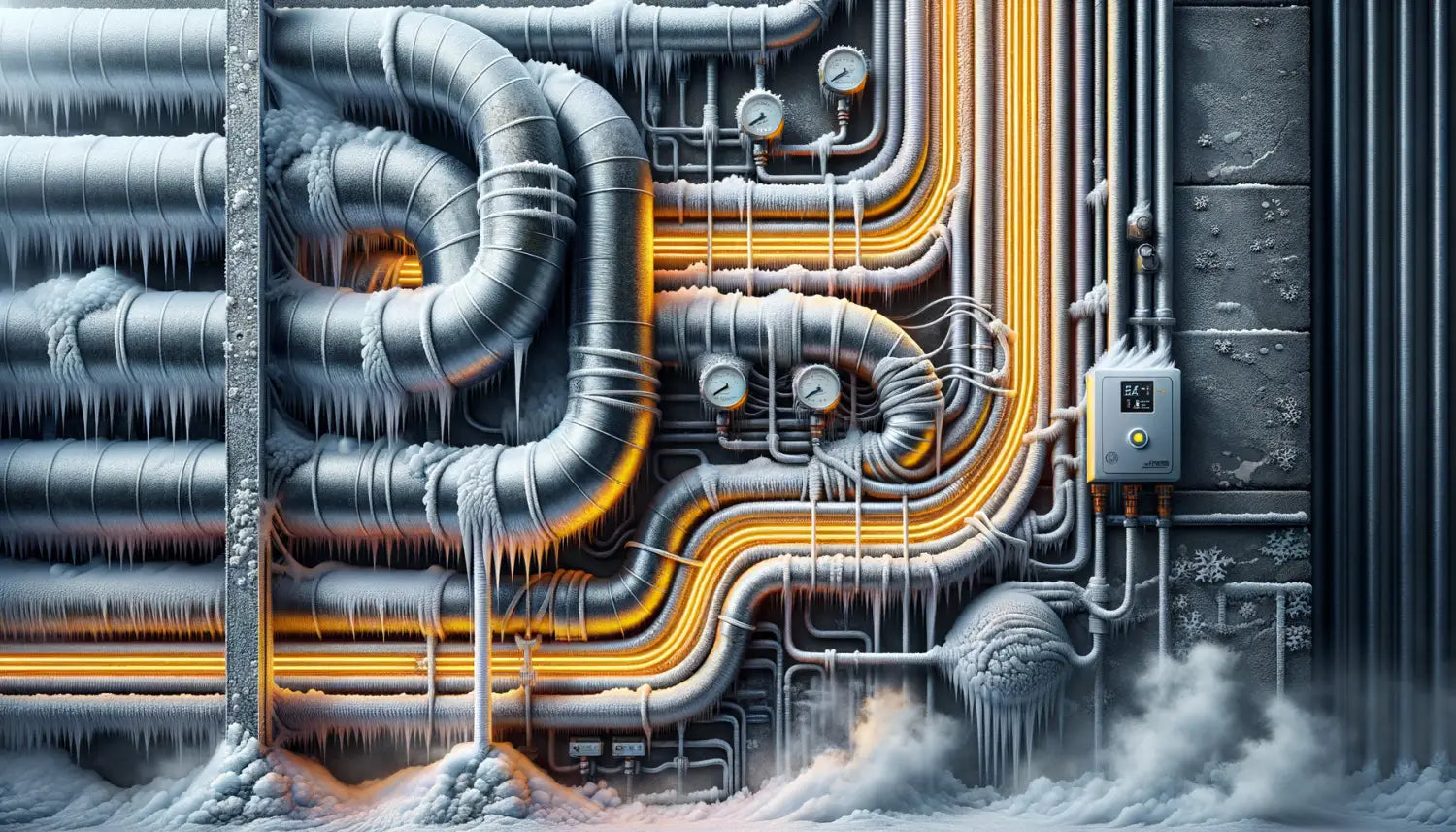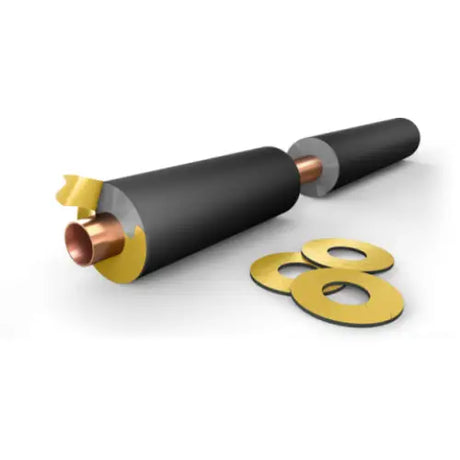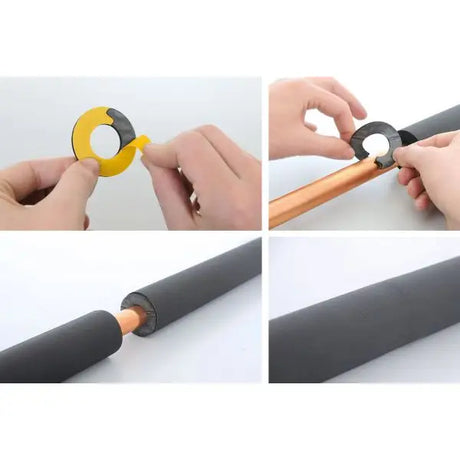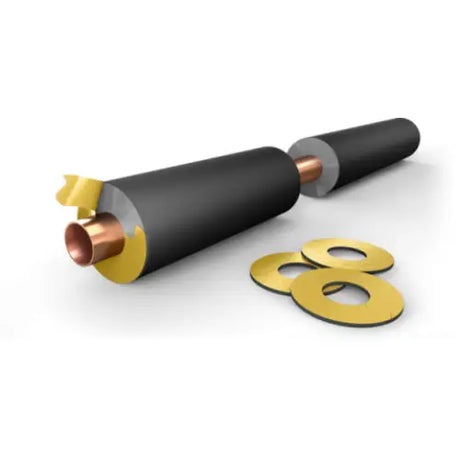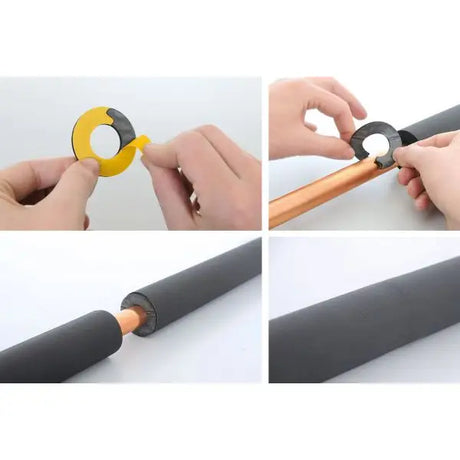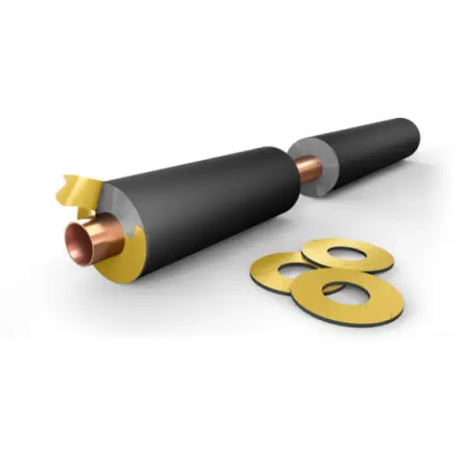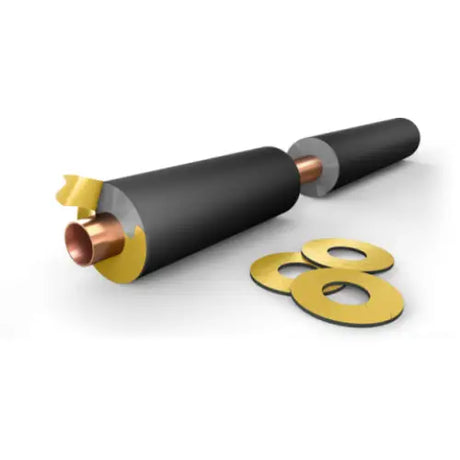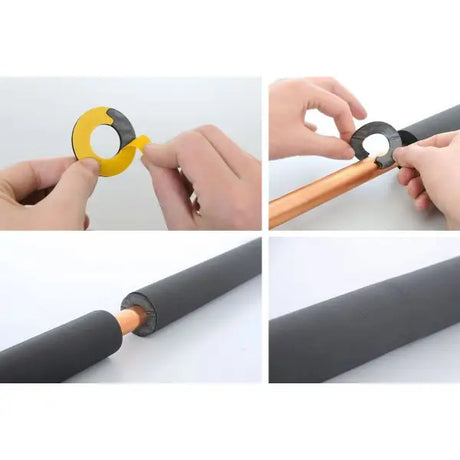In the persistent shift of seasons and the relentless advance of technology, the need for effective heat management systems becomes increasingly vital. Heat trace technology, a vital component in temperature management and freeze protection, stands at the forefront to answer that need. In this definitive guide, we'll explore how selecting the right heat trace system, understanding installation best practices, and complying with industry standards and regulations are fundamental in meeting your heat trace requirements.
Understanding Heat Trace Systems
At the heart of thermal regulation in various industries lies the heat trace system, an intricate network designed to apply heat through cable elements to maintain or raise the temperature of pipes and vessels. The basic principle of heat tracing comes down to compensating for heat lost to the environment, ensuring fluids within pipes do not freeze and that processes requiring specific temperatures are maintained.
Electric Heat Tracing
Among the different types of heat trace systems, electric heat tracing is most prevalent, thanks to its efficiency and ease of use. This technology functions by running a heating cable along the length of pipes or vessels, emitting heat that is then absorbed by the traced object. Especially beneficial for areas with extreme temperatures, electric heat tracing provides an unparalleled advantage as it maintains consistent heat distribution, a critical factor in preventing cold spots and freezing.
Thermal Management in Heat Tracing
Thermal management within heat tracing systems is no small feat; it necessitates a fine balance between heat production and protection against external temperature variations. Modern advances in monitoring and controlling technologies ensure that the right amount of heat is supplied, maintaining the integrity of pipelines and contributing significantly to operational reliability.
Selecting the Right Heat Trace System
When it's time to choose a heat trace system, a myriad of factors come into play. The selection process must consider the specific needs of the project, including the type of substance being processed, environmental conditions, and system longevity. The goal is to secure a system that offers flexible control options and robust performance.
| Factor | Description | Considerations |
|---|---|---|
| Pipe Material | The type of material used for the pipes. | - Metal (e.g., steel, copper) - Non-metal (e.g., PVC, PEX) |
| Pipe Size and Length | Dimensions and layout of the piping system. | - Diameter of the pipes - Total length of the piping system |
| Substance Characteristics | The nature of the substance flowing through the pipes. | - Temperature maintenance requirements - Freezing point - Viscosity |
| Ambient Environmental Conditions | Conditions surrounding the pipes. | - Ambient temperature ranges - Humidity levels - Exposure to elements |
| Thermal Insulation | Type and thickness of insulation used. | - Material (e.g., foam, fiberglass) - Thickness and thermal resistance |
| Control and Monitoring Requirements | How the system will be managed and monitored. | - Thermostatic controls - Remote monitoring capabilities |
| Energy Efficiency | Efficiency of the heating system. | - Power consumption - Cost-effectiveness |
| Safety and Compliance | Adherence to safety standards and regulations. | - Electrical and fire safety standards - Industry-specific regulations |
| Installation and Maintenance | Considerations for setting up and maintaining the system. | - Ease of installation - Maintenance requirements and frequency |
Temperature Maintenance Needs
Fundamental to the selection process, assessing the temperature maintenance needs of your system is vital. Various substances require different temperature thresholds to remain in a stable state or flow freely without solidifying. It is essential to choose a heat trace system that can provide a consistent range of temperature settings, customisable to your unique operational needs.
Preventing Freeze with Heat Trace
A primary function of heat tracing systems is freeze protection. By maintaining a temperature above the freezing point of the materials flowing through the pipes, heat tracing prevents costly freezes that could damage infrastructure or halt production, especially in colder climates.
Cable Selection for Heat Trace Systems
The variety of available heat tracing cables means selecting the right one can be daunting. Yet it's crucial to match the correct cable type to the specific application, as attributes such as power output, durability, and chemical resistance vary greatly.
Understanding Heat Transfer in Cables
Understanding heat transfer principles is essential in selecting a heat trace cable. The cable must deliver enough heat to counteract any losses, yet not overheat, which could lead to energy wastage or damage. Opting for a cable that efficiently balances heat transfer can translate into marked cost savings and improved systems longevity.
Insulation Requirements in Heat Tracing
In a well-designed heat trace system, insulation is the silent sentinel that ensures efficiency and safety. Insulation materials reduce the rate of heat loss, allowing the heating cable to maintain the required temperature with less energy consumption. When selecting insulation, it's important to consider the required thermal resistance and the environmental factors that the system will face. For top-tier insulation solutions, you may consider perusing the range at Pipe Insulation.
Pipe Heating Considerations
An often-overlooked element in heat tracing is the type of pipes being used. Different materials—such as PVC, steel, or copper—have varying heat requirements, and these need to be carefully calculated to ensure the correct application of heat trace technology.
Thermostat Control for Heat Trace
For precision temperature control, thermostats are integral components of heat trace systems. Whether you're looking for on/off control or more sophisticated systems integrating with building management systems, the choice of thermostat can greatly impact the effectiveness of your heat trace solution. A well-chosen thermostat not only maintains the desired temperature but also contributes to efficiency by reducing energy usage when full heating power is not required.
Installation Guidelines for Heat Trace Systems
A heat trace system's effectiveness is largely determined at installation. Preparing correctly for the installation, following a disciplined process, and ensuring adherence to guidelines can mean the difference between a system that lasts and one that fails prematurely.
Electrical Safety during Installation
Safety during installation is paramount. Electrical work, particularly when involving heating systems, must strictly adhere to the latest electrical standards and codes to safeguard against accidents and equipment damage. Users should be well-versed with safety practices, from insulation considerations to employing certified electricians for the installation work, to promote a built-in safety culture within their operations.
Maintaining Heat Trace Systems
Routine checks and maintenance are the bedrock of a long-lasting heat trace system. By adhering to a scheduled maintenance routine, potential problems can be identified early, preventing system failure and prolonging the system's life. Should issues arise, easy access to Trace Heating Fixings & Accessories can facilitate quick and efficient repairs.
Troubleshooting Techniques
Even the most well-maintained systems can encounter problems, which is why understanding troubleshooting techniques is invaluable. By learning to identify the signs of common issues such as broken cables, malfunctioning thermostats, or insufficient insulation, you can take swift action to rectify problems, minimizing downtime and costs.
Adhering to Industry Standards
Standards act as a backbone for quality and safety, guiding both manufacturers and users of heat trace systems. By familiarizing oneself with relevant standards, one can not only ensure safety and performance but also streamline processes to meet industry best practices. It’s important to not only keep up with current standards but also anticipate changes which may affect system compliance in the future.
Compliance with Regulations
Staying on top of the ever-evolving landscape of national and international regulations is a non-negotiable responsibility for anyone employing heat trace systems. By understanding your obligations and ensuring your systems are compliant, you'll protect your operation from legal repercussions and potentially damaging liabilities. Regular audits and inspections can help maintain adherence to these regulations, and utilizing high-quality components from collections such as Vapor-Fas Cladding can help in meeting stringent compliance needs.
Thus far, we have delved deeply into the nuance and necessity of the heat trace system—from the intricate details of cable selection and installation to the critical importance of maintenance and compliance. With the foundational knowledge laid, it's clear that a tailored, well-executed approach to heat tracing is not just beneficial but essential to the efficient and sustained operation of temperature-critical systems.
Energy Efficiency in Heat Trace Systems
The call for sustainability rings loud across all sectors, and the heat tracing industry has not been exempt. As energy costs continue to rise and with a growing emphasis on reducing carbon footprints, optimizing energy efficiency in heat trace systems is a top priority. This involves not only selecting energy-efficient components but also designing systems for maximum heat retention and minimal waste.
Strategies for Energy-Saving in Heat Trace
Energy-saving strategies in heat tracing revolve around meticulous system design and the integration of advanced control mechanisms. By using thermostats and sensors to adjust heat output in response to external temperature changes, systems can avoid unnecessary power consumption. Moreover, leveraging high-quality insulating materials from Polyurethane Insulation can significantly reduce energy costs by preventing heat loss.
Assessing System Efficiency
Regular assessment of your system's energy efficiency can identify potential areas for improvement. This might involve reviewing insulation performance, testing control system accuracy, or simply ensuring that all heat tracing elements are functioning as intended. By systematically addressing these factors, businesses can ensure their systems run at peak efficiency.
Reducing Heat Loss in Heat Tracing
Managing and minimizing heat loss is one of the most effective ways to enhance the performance of a heat trace system. Every joule of heat that escapes unproductively is a direct hit to the system's efficiency and the owner's pocket.
Identifying Sources of Heat Loss
To effectively combat heat loss, it's crucial first to identify its sources. From inadequate insulation to gaps in system design, unaddressed heat loss can lead to significant energy expenditure. A thorough audit of the current system, with particular attention to insulation integrity, can provide valuable insights.
Minimization Techniques
Once sources of heat loss are pinpointed, applying minimization techniques becomes the next order of business. This can range from sealing leaks with products from Mastics, Sealants & Coatings to upgrading to more efficient components, such as self-regulating cables that adjust their output based on ambient temperature.
Process Heating with Heat Trace
Heat tracing plays a pivotal role in process heating, where maintaining precise temperatures is often critical for chemical reactions or other industrial processes. The adaptability of heat trace systems to various shapes and surface areas makes them ideal for process heating applications.
Heat Trace in Industrial Applications
No two industrial applications are the same, and as such, heat tracing systems must be flexible and versatile. Industries ranging from food processing to petrochemical manufacturing rely on heat tracing to avoid product degradation or to facilitate movement through pipelines. To accommodate these varied needs, systems must be comprehensively designed with all operational factors in mind.
Conclusion
By integrating components such as advanced Trace Heating Cables and augmenting them with quality insulation and safety-focused Trace Heating Boxes, businesses can achieve a delicate balance between operational excellence and industry compliance. Whether the aim is to avoid the perils of a freeze, ensure process precision, or advance energy-saving initiatives, heat tracing systems remain a cornerstone of industrial thermal management.
| Key Takeaways | Description |
|---|---|
| Understanding Heat Trace Systems | Heat trace technology is vital for temperature management and freeze protection. Electric heat tracing is the most common type, efficiently maintaining consistent temperatures. |
| Selecting the Correct System | To choose the right heat trace system, consider factors like the substance, environment, and required temperatures. Freeze protection is a primary function of heat trace systems. |
| Cable and Insulation Selection | Selecting the appropriate cable type and insulation is crucial for an efficient and safe heat trace system. Insulation helps reduce heat loss, allowing for less energy consumption. |
| Installation and Maintenance | Proper installation is key to system effectiveness, with electrical safety being paramount. Routine maintenance prevents system failure and prolongs the system's life. |
| Troubleshooting | Understanding common troubleshooting techniques can minimize downtime and costs. Familiarity with the signs of common issues leads to swift and effective problem resolution. |
| Adhering to Industry Standards | Familiarizing oneself with industry standards ensures safety, performance, and best practices. Compliance with regulations is critical to avoid legal repercussions. |
| Energy Efficiency and Sustainability | Maximizing energy efficiency in heat trace systems is essential in the current eco-conscious climate. Strategies include using energy-efficient components and improving insulation. |
| Minimizing Heat Loss | Minimizing heat loss is an effective way to improve system performance. Identifying sources and employing minimization techniques like high-quality insulation is imperative. |
| Process Heating and Industrial Use | Heat tracing is versatile and crucial in industrial applications for maintaining precise temperatures in processes. It's adaptable and can be tailored to a variety of industrial needs. |

